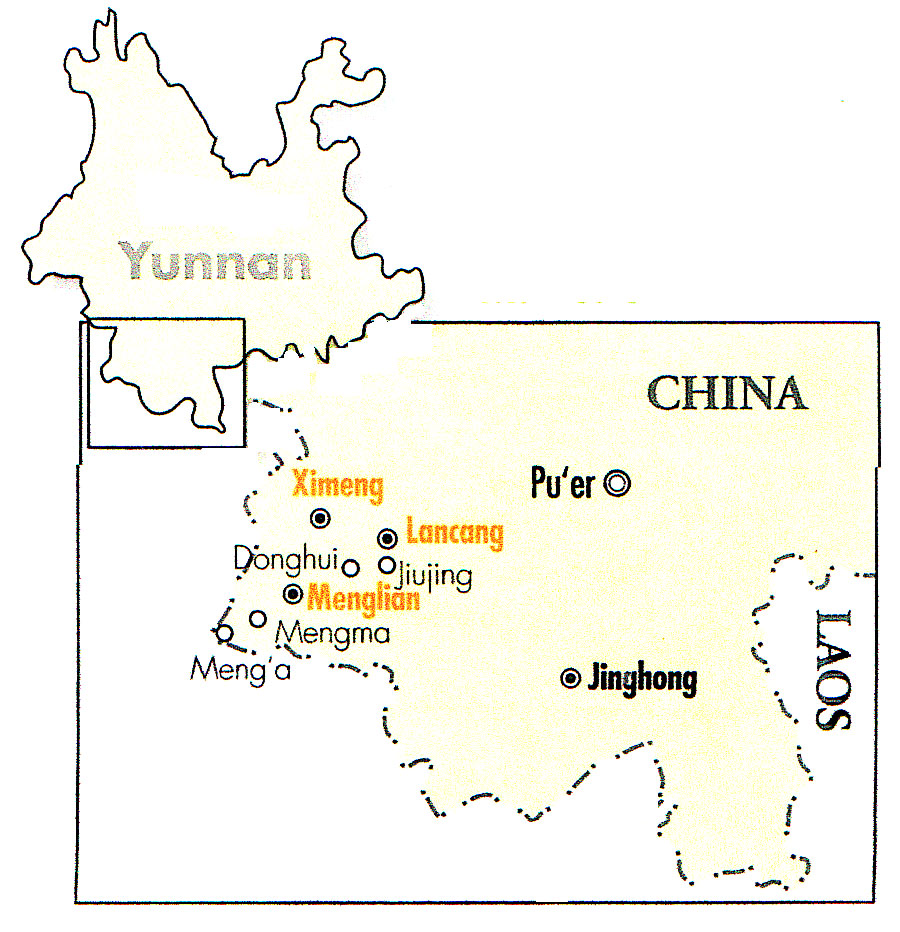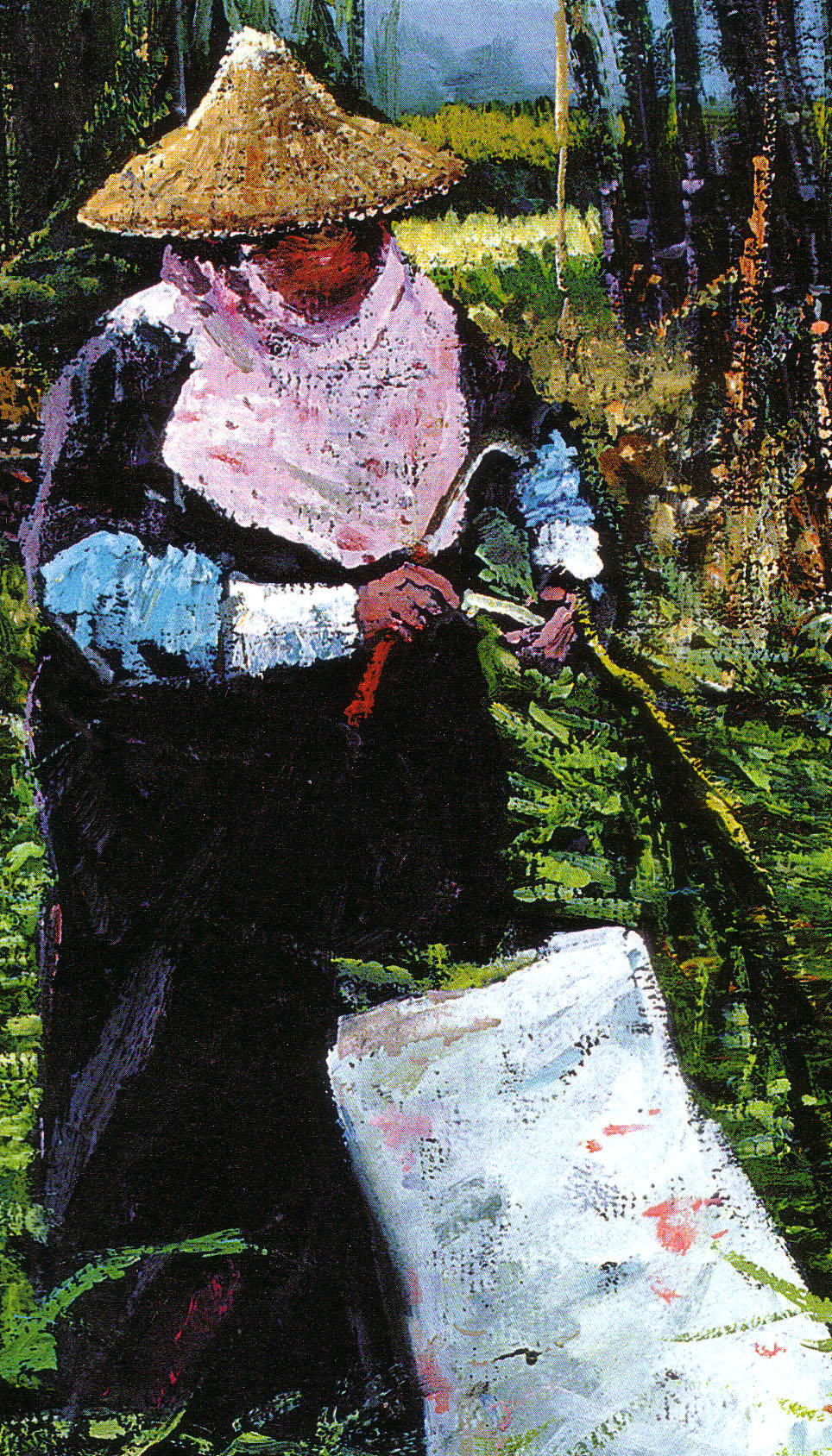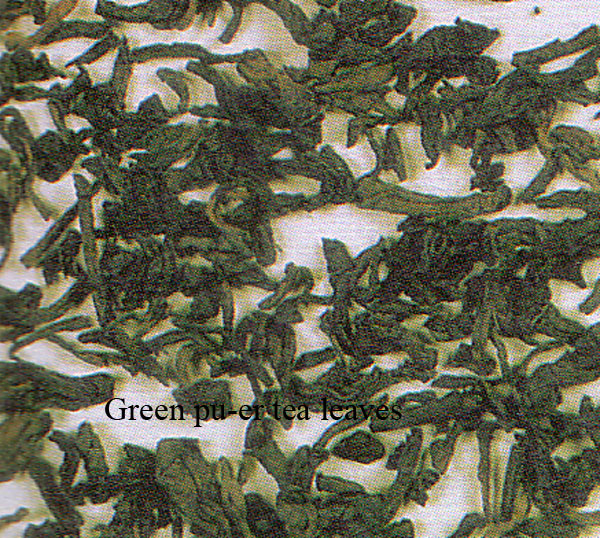
| What is Flavor and Fortune? |
| How do I subscribe? |
| How do I get past issues? |
| How do I advertise? |
| How do I contact the editor? |
Read 12879272 times
Connect me to:
| Home |
| Articles |
| Book reviews |
| Letters to the Editor |
| Newmans News and Notes |
| Recipes |
| Restaurant reviews |
| Article Index (all years, slow) |
| List of Article Years |
| Article Index (2025) |
| Article Index (last 2 years) |
| Things others say |
| Related Links |
| Log In... |
| Authors |
| Categories & Topics |
Pu-er Tea: Kinds and Confusions
| by Jacqueline M. Newman |
Beverages
Fall Volume: 2010 Issue: 17(3) page(s): 27, 29, and 30

 Originating in Yunnan, this tea even befuddles the experts. Said to be one of the few large-leaf varieties that is gaining in popularity, and thought to be a good investment, why is so little known about what makes a great cup of Pu-er tea? Also, why is there so little agreement about what it is, where it comes from, what it looks like, how it is processed, and so much more? A good quiz-question could be: Will the real great Pu-er tea really come forward!
Originating in Yunnan, this tea even befuddles the experts. Said to be one of the few large-leaf varieties that is gaining in popularity, and thought to be a good investment, why is so little known about what makes a great cup of Pu-er tea? Also, why is there so little agreement about what it is, where it comes from, what it looks like, how it is processed, and so much more? A good quiz-question could be: Will the real great Pu-er tea really come forward!
Zhang Jinhong, in a recent article, says that Pu-er tea is a "drinkable antique." He also considers it one that is gaining in taste and more valuable after holding it for a long time. Like French red wines, does it always increase in value the longer it is stored? Zhang also says that drinking this tea in Hong Kong can be traced at least to the 18th century. Is this how old the Chinese think pu-er tea really is? Did not pu-er's drinking history begin in the Yunnan Province much before that? Was not Yunnan its original growth and production area and the place where most good Pu-er tea came and still comes from? Was it not, in 1052 CE, originally in the shape of a ball the size of a man's head that weighed five catties? And, was it not originally called 'man-head tea?'
Some speak about Pu-er tea not only in terms of its age and where it grows but also discussing the importance of where and how it is stored. Many suggest a dry region such as Kunming, others tout a more humid one. There are those that say good pu-er tea needs to be made from big leaves from old tall tea trees and not from small leaves picked from low bushes. These same folk think a two-year-old Pu-er is raw and rotten, one ten years old in its infancy, one twenty-five years of age beginning to be good, and one thirty-five years and older wonderful tea lleaves that produce a warm, wonderful, smooth, and special beverage. These same folk say that aged tea gives them strength, especially when the leaves and not the infusion are chewed or otherwise consumed.
For those that tout storing pu-er tea in warm and humid locations, is that done in the sun or shade? Great pu-er, some say, should be picked in the spring when green, and it should have leaves that will brew a reddish-yellow liquid. They say that it needs to be aged naturally (a process also known as oxidation and/or fermentation) with its leaves dried for some time in the sun, then stir-fried, and later dried some more time but in the shade. More modern folk say that last drying can be in an oven. If that is the case, then why is oven-dried tea less expensive than teas air-dried in the shade?
Some say the best pu-er tea comes from trees in the mountains-–special mountains, in addition to being naturally aged. Furthermore, they say one should purchase pu-er tea shaped round, called tou cha which is like the top or cap of a button mushroom and not as a head or as a flat disk about the size of a breakfast plate. They also recommend buying pu-er tea from one of the nine recognized wholesale markets in Dashanghui, Jinshi, Jinli, Juhua, Kangle, Qianwei, Tangzixiang, Xiongda, or in Xiyuan. Furthermore, they want assurances that thanks to one or another bacteria, mold spore, or fungus such as Penicillum chrysogenum, Rhizogus chinensis, or an Aspergillis, that their pu-er tea has no quickie process when drying its tea leaves.
Aged teas are not new, nor were they always appreciated. In Han Dynasty times (206 BCE - 220 CE), the leaves of tea trees in Yunnan were shipped to Eastern China as loose, compressed, twisted, or thin twists or as leafy chunks of tea leaves, some aged and others not. Over time, pu-er tea was considered better as it got older. However, some now say, that is only some, that those people are tea fanatics.
Many agree that educated consumers have added value to aged pu-er brick tea, but only if stored for thirty to fifty years, kept in the dark, and kept at an even temperature and in a humidity-controlled warehouse. Teas kept this way, these people say, have a 'good aged taste,' and because they are in demand, their price is higher. Is this myth or deception, or is it because pu-er tea is not quite fashionable?
Who was the first to write about the aging of tea? Was it the Ming scholar Li Yuanyang in the Jiajing Gazetteer? Did he not only speak about aging tea and was the tea he spoke about a pu-er tea? No one knows for sure, nor do they know how long any aged tea was actually aged. What they may know is that these aged teas were considered great digestives, so good they were said to aid in digesting fats, neutralizing poisons, and promoting secretions. Marvelous stories were told in regard to their solvent actions and that they could dissolve metals such as gold and iron. One even said that if in a pot with poultry or meat, their flesh, bones, and stock were converted into a most nourishing broth. Did these aged teas also dissolve the pot, one clever chap inquired?
Some Qing Dynasty texts did compare new and aged teas and spoke of their yin and yang qualities with respect to aiding digestion, reducing fat, and helping heal metabolic problems. But were they speaking about pu-er tea? What is known, is that pu-er tea has been called 'cosmetology tea' and 'tea prolonging life.' Did they mean aged pu-er tea, and if so, how long was it aged and how? Some spoke of 'roasting' tea which they called hong pei; was this done for pu-er teas? How common a practice was this, how was it done, for how long, and at what temperature?
Some historical texts that say aging tea for more than a year means reducing its flavor and taste. They even say that the aroma, if the tea is more than one year old, is also reduced. Many agree that these aged teas are good medicinally, but is the tea they are talking about pu-er tea? If so, how old is it and where did the tea leaves come from? Many tout 'wild' tea trees to make pu-er tea. They especially like older wild ones. But most older tea trees were cultivated then left un-managed for some time; do they mean these once-wild tea trees? The questions go on and on.
There are tea plants from seeds of the old so-called 'wild' tea trees. Do they produce better big-leaf teas? There is some consensus about this issue, and that is that these leaves produce inferior tea. Is that from the chemicals used to cultivate them? What about small-leaf varieties brought from other parts of China? Reports are that of these pu-er teas do and some do not get high marks or high prices.
Experts ask still other questions about pu-er and other teas. Three common queries are: Did the leaves face north or south; were they high up or lower down on the branches; and, were the trees above sea-level or not? Finally, they wonder what season of the year were the leaves picked?

 In general, spring picking of tea leaves is said to produce the most sought after teas. In that picking, there is the first flush or da chun which means leaves picked at the beginning of spring. The second flush and third flush, er chun or chun wei, respectively, are leaves picked during the middle and at the end of spring of the third flush. Among these pickings, single tip leaves of the first flush bring in the most money; they are called 'single tooth' or dan ya leaves.
In general, spring picking of tea leaves is said to produce the most sought after teas. In that picking, there is the first flush or da chun which means leaves picked at the beginning of spring. The second flush and third flush, er chun or chun wei, respectively, are leaves picked during the middle and at the end of spring of the third flush. Among these pickings, single tip leaves of the first flush bring in the most money; they are called 'single tooth' or dan ya leaves.
Knowing all of this, what pu-er tea should one purchase? Some say that the one making the best brew is a mix of tea leaves from all of these pickings. It is leaves picked, spread out to wilt for maybe an hour, then dry-fried in a wok over a wood fire kept under seventy degrees centigrade. One needs to know that and the heat of the wok, the weather when picked and fried, how long and how gently they were tossed, and how they were then rolled. Also, if rolled by hand or machine, rolled once or twice, and finally how they were steamed and pressed.
So the question really is: Does the pu-er tea you buy provide all of this information? Does it come as one round flat brick weighing 375 grams, a disk from a stack of seven called 'seven piece cake' or qi zi bing>? Is it flat because someone stood on the pressing board? What is this tea's moisture content, and was it from Simao, a town whose name was changed to Pu-er in 2007 or is it from elsewhere?
While all pu-er tea leaves may have started out as mao cha or tea leaves grown at a high altitude, and dried in the sun, and a batch of leaves made the old way or fermented in about sixty days, what else do you need to know about the pu-er tea you purchase other than its price?
Of course, pu-er tea did originally come from Southern Yunnan and it was a specific kind of tea. However, after 1949, all private tea firms in Yunnan were closed by the government. After that year, pu-er and that means all tea cakes and bricks produced in this province and elsewhere in China could now be called Pu-er tea. That is true no matter where they came from. What has not changed is that there are basically two types, the shu or black and the sheng or green pu-er teas. Those of the latter variety are said to be the most valuable, and really valuable if they are thirty years old and processed and kept under favorable conditions. But they are only valuable to the consumer if they like the tea they brew.
Yunnan or dian cha tea is first mentioned in the Tang Dynasty in a work called Manshu in the year 862 CE. There, it says that the Mengshan Tribe in Xushuangbanna boil the tea they drink after they mix it with Sichuan pepper, ginger, and cinnamon. Is this Pu-er tea; and do you like yours made that way?
In 1729 CE and thereafter, Pu-er tea became known as gong cha or gong tea. The costs of gong cha rose after it was given yearly to the Emperor as tribute tea. This tribute was green tea leaves made from the plant's leafy tips. So what about the Pu-er tea made from large leaves? With all the kinds of Pu-er tea, all the teas prepared in these and other ways, we doubt that there are simple answers to what is Pu-er tea, and what is the best pu-er tea. If you know the answer, educate us all.
In the meantime, evaluate the pu-er tea you drink for its texture when brewed. This is called its shu xing. Also evaluate its hou yun; that is its aroma; taste as it goes down your throat. Finally, consider its qi dong or what elders call the energy or physical circulation induced by drinking it. After you do, keep in mind that the most important thing is to enjoy your pu-er tea. I certainly enjoy mine!
| Tea-stuffed Mushrooms |
|---|
1 small potato, boiled, peeled, then mashed (about half cup) 3 Chinese black mushrooms, soaked, stems discarded, minced, then steamed for five minutes and drained 4 water chestnuts, minced 1 piece tangerine peel, soaked, then minced (about two teaspoons) 2 Tablespoons dry pu-er tea, soaked, then minced 1 Tablespoon carrots, minced 1 teaspoon sugar 1 Tablespoon thin soy sauce 20 Chinese black mushrooms for stuffing 1/2 cup flour 1 Tablespoon cornstarch 20 green peas 1/2 teaspoon ground white pepper 1 cup vegetable oil, for deep frying Preparation: 1. Mix mashed potato with minced mushrooms, water chestnuts, tangerine peel, minced tea leaves, carrots, sugar, and soy sauce. 2. Dust mushrooms with about a teaspoon of the flour, then mix the rest of it with the cornstarch and half-cup of water. Beat to make a lump-free batter. 3. Stuff each mushroom with a heaping tablespoon or more of the potato mixture, and put one green pea in the center of each stuffing. 4. Heat the oil, then dip the stuffed mushroom into the batter and deep fry until golden brown, drain on paper towels, then serve. |
| Eggs with Aged Tea |
|---|
20 eggs, hard-cooked for ten minutes 1/2 cup dry pu-er tea leaves 6 star anise 4 inches of stick cassia bark 1/2 cup thin soy sauce 1 Tablespoon sugar 1 Tablespoon hot sauce Preparation: 1. Roll the eggs to make cracks in the shells, but not break them. 2. Put eggs into a sauce pan and cover with cold water. Then bring the water to below the boil, reduce heat, and simmer the eggs with the tea leaves, star anise, sticks of cassia bark, soy sauce, and sugar for half an hour. Remove the eggs reserve the liquid, and peel them. 3. Using half cup f the reserved liquid, add just barely enough cold water to cover them and the hot sauce and simmer for ten minutes. Remove the eggs, discard the water, and cut them in halves and put them in a circle around a platter, every other one yolk side up, then serve. |

Copyright © 1994-2025 by ISACC, all rights reserved
Address
3 Jefferson Ferry Drive
S. Setauket NY 11720